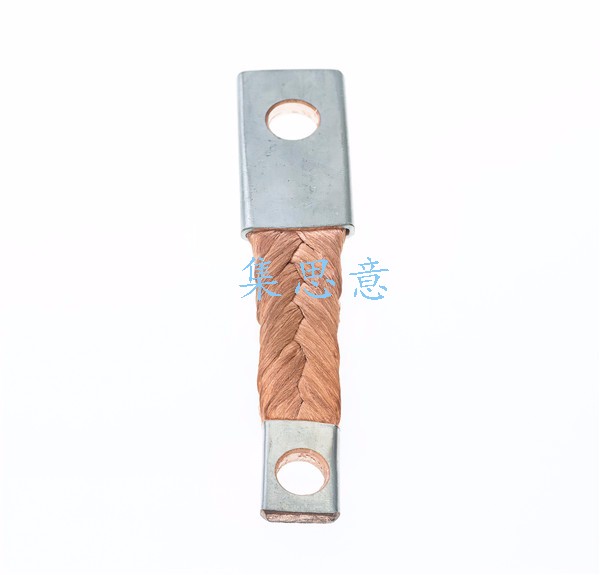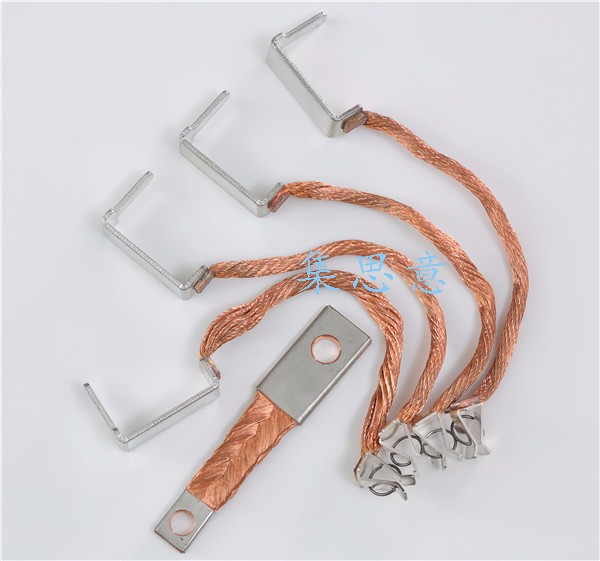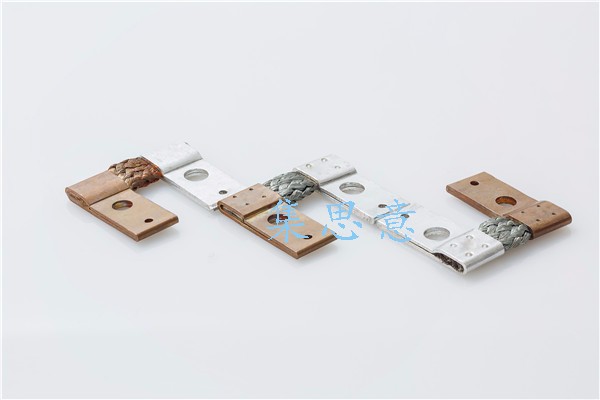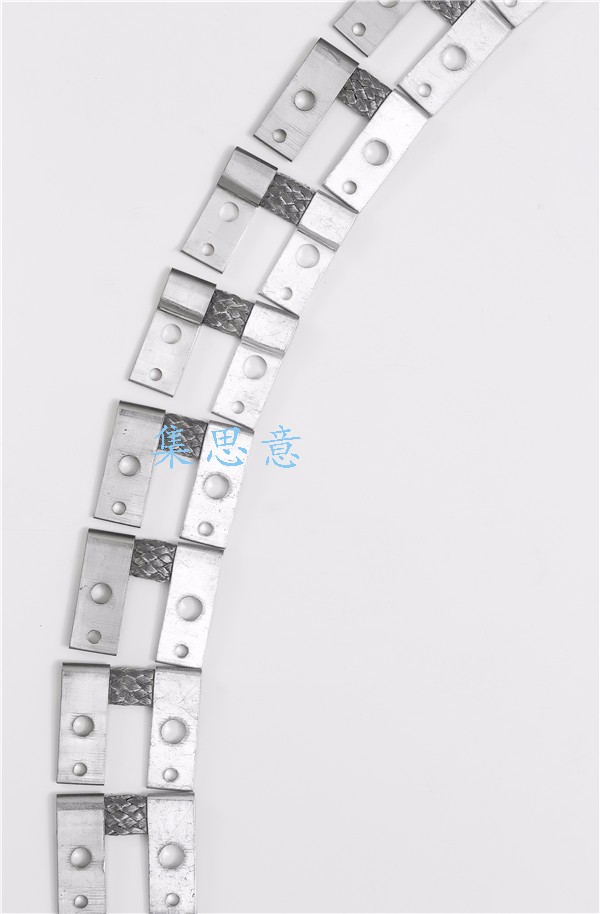Carbon brush, also known as electric brush according to industry standards, is a device used in electric motors, generators, or other rotating machinery to connect fixed and rotating parts for transmitting energy or signals. Because its main constituent material is carbon, it is named carbon brush. As a sliding contact, carbon brushes are widely used in many electrical equipment.
The application materials used in carbon brush products are diverse, mainly including graphite, electrochemical graphite, impregnated graphite, and metal graphite containing copper, silver, etc. It is usually made of pure carbon with a coagulant added, and its appearance is usually square. It is installed on a metal bracket and tightly pressed on the rotating shaft under the action of a spring. When the motor is running, the carbon brush is responsible for transmitting electrical energy to the coil through the inverter. Due to sliding friction during operation, carbon brushes are easily worn parts and require regular maintenance and replacement, as well as timely cleaning of carbon deposits. Its appearance is similar to the rubber strip of a pencil eraser, with wires leading out at the top and varying sizes.
1、 Brief History
(1) International
After the 1870s, the model of steam engines driving generators to generate electricity emerged, and the power supply gradually increased. Electric motors were also widely promoted. In 1883, Farbe, a Frenchman, produced carbon brushes, which created conditions for the improvement of capacity and speed of generators and motors. During the period of 1895-1900, countries such as Britain and France established charcoal brush production plants one after another. In 1877, Edison invented the telephone, and the structural material of the telephone was made of carbon vibrating membrane and carbon particles. Shortly thereafter, carbon products for electrical use and wear-resistant carbon products for mechanical industry were integrated, gradually developing into specialized electric carbon product factories.
(2) Domestic
The manufacturing industry of electric carbon products has a history of over 100 years worldwide, while in China, it has only developed for about 30 years. Before 1949, there were only Manchuria Carbon Corporation, which produced carbon rods and plates for dry batteries during the Japanese occupation of Northeast China, as well as some small-scale factories and workshops in Shanghai that processed electric brushes. After the establishment of the People's Republic of China, the electric carbon manufacturing industry began to gradually establish and develop. Due to their excellent conductivity, heat resistance, corrosion resistance, self-lubricating properties, low specific gravity, and low coefficient of thermal expansion, electric carbon products are widely used in many fields such as electrical engineering, machinery, metallurgy, coal, chemical engineering, transportation, electronics, aviation, atomic energy, household appliances, and biotechnology. They play a key role in many sectors of the national economy and international cutting-edge technology fields.
2、 Industry development
(1) During the period of exploring, developing, and introducing Soviet technology from 1949 to 1958
After the establishment of the People's Republic of China, in order to meet the urgent demand for electric brushes in the Northeast region, Fushun Aluminum Plant (301 Factory) established a 30 person electric brush trial production section using equipment left by the Japanese puppet regime. With the samples provided by Fushun Mining Bureau and the information that can be collected, after a year of hard work, the first generation of electric locomotive brushes have been successfully developed, which can replace foreign brushes after testing. In 1952, the trial production section of the electric brush was relocated to Harbin Battery Factory, and an electric brush workshop was established, starting to produce various varieties such as natural graphite electric brushes and copper graphite electric brushes. In June 1958, the key project assisted by the Soviet Union, Harbin Electric Carbon Plant, was completed and put into operation, capable of producing 6 series and 21 varieties of electric brushes, thus ending the dominant position of "foreign carbon" in the Chinese market. After 1958, Shanghai Electric Carbon Factory (formerly Shanghai Electric Brush Factory) and Beijing Electric Carbon Factory (formerly Beijing Carbon Rod Factory) were successively established, and the embryonic form of China's electric carbon industry began to take shape.
(2) From imitation to self-designed period from 1958 to 1970
The Harbin Electric Carbon Plant was initially designed based on the Soviet Union's Gujinova Electric Carbon Plant, and its process technology and main equipment adopted the plant's standards. However, the product variety was single and could not meet the diversified needs of the market. Through continuous efforts, the factory has developed and produced D172 brushes suitable for the collector ring and exciter of steam turbine generators below 200MW, D104 and D308 brushes for steel rolling motors, and D374 brushes for traction motors. And based on accumulated experience, we independently designed and produced graphite anodes and grids for mercury arc rectifiers, wear-resistant graphite sealing materials, trackless tram sliders, electric locomotive skateboards, graphite for heaters, and other products. The variety has expanded to nearly a hundred, and the output has increased to 800 tons. At the same time, specialized equipment such as lead tin powder spraying machine, copper powder grinding linkage line, mobile graphitization furnace, and continuous electric furnace have been independently designed. The B108-60 film projection carbon rods produced by Beijing Electric Carbon Factory have been exported since 1958, and the export scope has gradually expanded to more than ten countries and regions in Southeast Asia. In the 1960s, two electric carbon factories in Fuxin and Zhuzhou were built and put into operation, gradually transitioning from the initial electric brush processing to the production of various types of electric brush blanks on their own, enhancing the supply capacity and production level of electric brush blanks in the industry. The most prominent development achievement during this period was the completion and operation of the Sichuan Dongxin Electric Carbon Plant, which was designed and built by Harbin Electric Carbon Plant. Compared with the first phase of the Soviet assisted construction project in Harbin, the mechanization and automation level of Dongxin Electric Carbon Plant have been improved, and the working conditions have also been significantly improved.
(3) Steady development period from 1971 to 1985
After 1971, especially after the implementation of the reform and opening-up policy, China's electric carbon industry entered a stage of large-scale and steady development. By 1985, a relatively complete multi variety electric carbon manufacturing industry had been formed, including 8 key backbone enterprises such as Harbin Electric Carbon Factory, Dongxin Electric Carbon Factory, Beijing Electric Carbon Factory, Shanghai Electric Carbon Factory, Shanghai Film Carbon Rod Factory, Fuxin Electric Carbon Factory, Zhuzhou Electric Carbon Factory, and Beijing Second Electric Carbon Factory, as well as more than 100 home appliance carbon product processing plants. The total number of employees in the entire industry has reached 6500 (including 800 engineering and technical personnel), with a total industrial output value of 64.24 million yuan and a production capacity of 3800 tons. Since 1971, the average annual growth rate of industry product output value has been increasing by about 5%. Electric carbon products not only meet the needs of rapid economic development in China, but are also exported to countries and regions such as the United States, Thailand, Singapore, Pakistan, and Bangladesh.
3、 Functional Features
Carbon brushes, as important components of motors, are generally made of carbon and other materials. They are mainly used to conduct current and achieve brush contact. They are widely used in electric motors of various industrial equipment, such as generators, wind turbines, power tools, etc. The main function of carbon brush is to conduct current and provide brush contact. Based on this, it has the following functional characteristics:
Good conductivity: Carbon is an excellent conductive material, and carbon brushes can form stable electrical contacts in wireless transmission mechanisms and achieve current transmission.
Non diffuse ignition: The motor is prone to sparking during operation, and carbon brushes can ensure that sparks do not diffuse.
Temperature stability: The carbon brush material can withstand high or low temperature environments, ensuring the normal operation of the motor under different temperature conditions.
Good wear resistance and durability: In general, carbon brushes have a low failure rate and a long service life.
4、 Structure
(1) Structural form
The graphite brush device can be divided into three types based on the installation direction of the brush on the commutator or collector ring: radial, backward tilting, and forward tilting. In commonly used radial structures, there are also differences in the way springs are pressurized. For example, (a) is a spiral coil spring, (b) is a helical compression spring, and (c) is a tension spring. All three spring compression methods directly apply spring pressure to the electric brush; (d) It is a lever pressure plate type, and its structural feature is that the spring pressure is not directly applied to the electric brush.
(2) Classification
Classified by materials
Carbon graphite electric brushes:
Natural graphite brush: This type of brush has a relatively high contact voltage drop, good rectification performance, and inferior current collection performance compared to electrochemical graphite brushes. However, it has excellent lubrication performance and is suitable for synchronous machine slip rings and AC wound motors with high line speeds.
Resin bonded graphite brush: This brush has a high resistance, high contact voltage drop, excellent commutation performance, ideal anti-oxidation and anti-wear performance, but consumes a lot of electricity and is mostly used in AC rectifier motors.
Electrochemical graphite brushes:
Graphite based brush (soft brush): Its characteristics are low friction coefficient, good lubrication performance, excellent current collection performance, thermal stability, and oxidation resistance. It is suitable for large synchronous motors with high linear speed, steel rolling motors with large instantaneous impact loads, and small and medium-sized DC motors.
Coke based brush (medium hard brush): This type of brush has a large contact voltage drop, good ability to form oxide film, good commutation performance, and certain current collection performance. It is used for steel rolling motors with high impact loads, as well as general DC motors with voltages higher than 220V.
Carbon ink based brush (hard brush): This brush belongs to the high resistance brush category of electrochemical graphite brushes. Its characteristics are high contact resistance of the electric brush, good commutation performance, suitable for DC motors with difficult commutation, but the structure is loose, the friction coefficient is high, and it is usually best to undergo immersion treatment before leaving the factory.
Metal graphite electric brushes: composed of metal and graphite, fully utilizing the good conductivity of metal and lubrication of graphite, and changing the performance of electric brushes by adjusting the content of metal and graphite. Its characteristics are low contact voltage drop, low resistance coefficient, and low electrical loss, mainly used for low-voltage high current motors and low-voltage AC wound motors.
In short, natural graphite brushes and electrochemical graphite brushes have higher resistance coefficients and voltage drops, are relatively wear-resistant, and allow for higher line speeds (up to 50-70m/s). The resistance coefficient and voltage drop of metal graphite brushes are relatively small, and their wear resistance is poor. The allowable linear speed for use is relatively low, about 15-35m/s. The material of electric brushes for power tools mainly uses electroplated graphite.
Divided by shape: there are flat brushes, spherical brushes, steam impregnated carbon brushes, hard carbon double-sided pressed carbon brushes, sheet carbon brushes, carbon brushes with hardness coating, etc.
Classified by usage scenarios: including carbon brushes for AC and DC motors, carbon brushes for collector rings, carbon brushes for traction motors in rail transit, carbon brushes for tools such as drills, lawnmowers, grinders, mixers, etc.
Divided by usage: there are natural force contact carbon brushes, spring compression carbon brushes, rotating force directional carbon brushes, etc.
5、 Application Fields
With the development of the motor manufacturing industry, the series and varieties of electric brushes for motors continue to increase. Currently, 13 series and 93 varieties of graphite brushes, electrochemical graphite brushes, metal graphite brushes, high resistance brushes, etc. can be produced. Carbon brushes have a wide range of applications, mainly used in fields such as generators and electric motors, and are used in both AC and DC motors. For example, carbon brushes are used in collector rings, traction motors for rail transit, as well as in tools such as drills, lawnmowers, grinders, and mixers. In addition, related products such as carbon rods, electric brushes, and sealing materials have been exported to more than 10 countries and regions including Hong Kong, the United States, and Southeast Asia. In 1991, three types and four brands of electric carbon products, including D313 motor brushes, S78 motor brushes, and D3741G/D371F locomotive traction brushes, developed by the Southern District Electric Carbon Factory, passed provincial technical appraisal. Among them, D313 electric brush is developed to meet the demand of introducing high-speed wire rod precision rolling motors into the domestic steel industry. This product has high electrical resistivity and sliding performance indicators close to the international level of similar products, which is the first of its kind in China and ends the history of importing electric brushes from countries such as the Federal Republic of Germany, the United Kingdom, and the United States. In October 1993, the factory purchased a dynamic experimental machine from Shanghai Electric Machinery Technology Research Institute and put it into use, achieving international electrical product standards for processing accuracy and testing methods. In 1998, the factory determined to use railway locomotive brushes as the pillar products. In December 1999, the factory's application for the diffusion of electromechanical products was approved by the locomotive product acceptance department of the Ministry of Railways, and locomotive traction brushes officially entered the railway market. The main products are the D and J series, which are used by more than 60 locomotive depots and high-performance locomotives in South China, Central China, Southwest China, Northwest China, etc. Railway brush products account for 40% -50% of the total output of the factory. In 2000, the Municipal Electric Carbon Factory completed its restructuring and established Zhuzhou Xinfangyuan Electric Carbon Co., Ltd. In the same year, the company's "ZT" brand electric motor brushes were widely used in fields such as railway and automobile transportation.
6、 Performance
The technical performance of electric brushes mainly includes resistance coefficient, hardness, contact voltage drop on a pair of brushes, friction coefficient, and 50 hour wear. The coefficient of resistance is a physical quantity used to measure electrical conductivity. At a voltage of 230V, the resistance coefficient of the electric brush can be appropriately increased; At a voltage of 120V, the resistance coefficient of the electric brush needs to be selected to be smaller. Because the current of a 120V motor is higher than that of a 230V motor with the same power, if brushes with the same resistivity are used, the brushes of the 120V motor are prone to heating, which may cause the brush holder temperature to exceed the normal range. The contact voltage drop of a pair of electric brushes refers to the potential difference generated when current flows into the brush, passes through the commutator, and then flows to another brush. When the electric brush and commutator come into contact with each other and generate relative motion under external force, the tangential resistance generated at the contact surface is called frictional force. The ratio of friction force to spring pressure is the friction coefficient between the electric brush and the commutator. The 50 hour wear value refers to the degree of wear of the electric brush after 50 hours of operation under the specified experimental conditions at the rated operating state.






